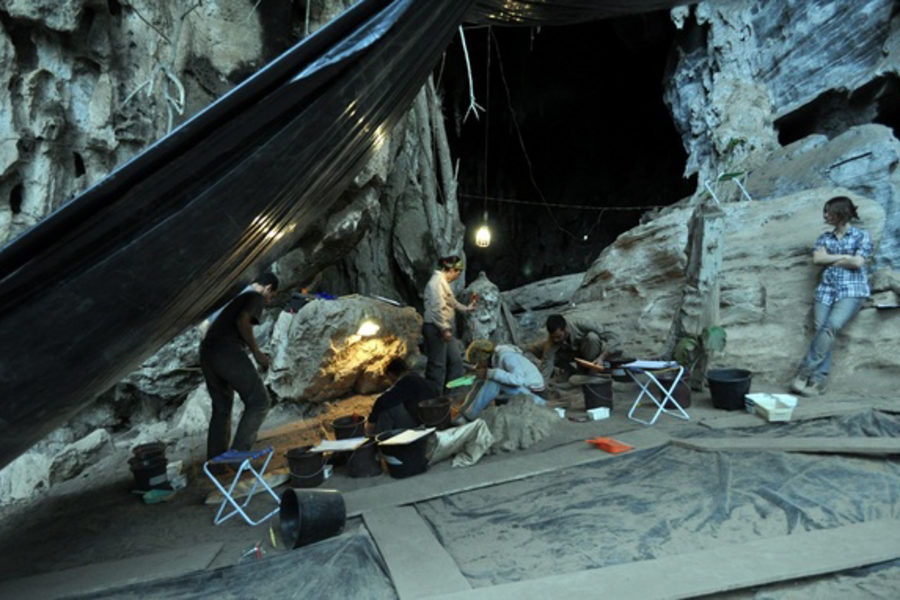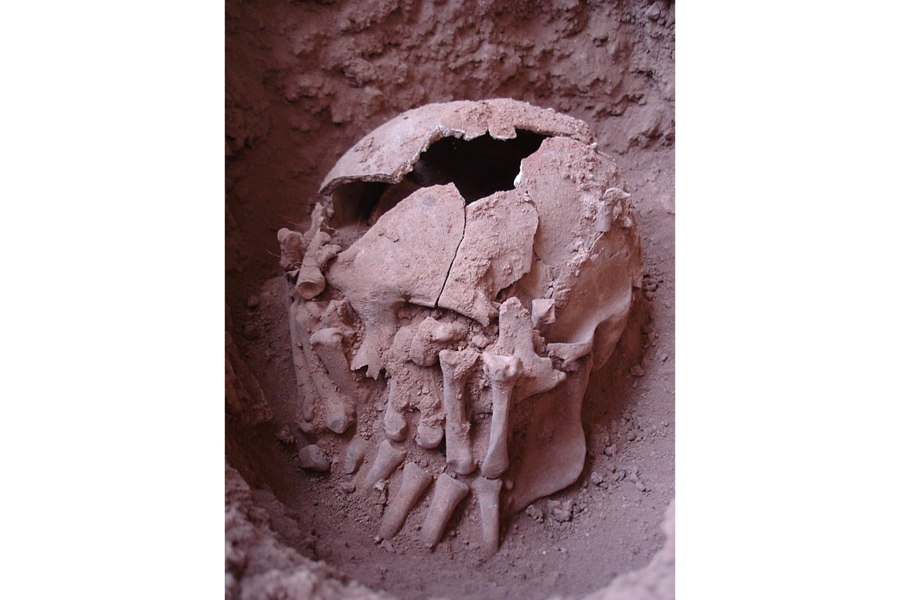Scientists discover earliest known ritual decapitation in Americas
Loading...
Under limestone slabs in a cave in Brazil, scientists made a ghoulish new discovery: a decapitated skull covered in amputated hands.
These 9,000-year-old bones may be evidence of the oldest known case of ritual beheading in the New World, raising new questions as to how this grisly practice began in the Americas, the researchers said in a new study.
Decapitation was likely common in the New World, according to the scientists. For example, in South America, heads of defeated enemies were often used as war trophies — the Arara people in the Brazilian Amazon used skulls of defeated enemies as musical instruments, the Inca turned skulls into drinking jars, and the Jivaro people of Ecuador shrunk heads to imprison the souls of foes. The Uru-Uru Chipaya people in Bolivia also once employed skulls in modified Christian rituals, and the Chimú culture in Peru incorporated decapitation as a standard procedure in human sacrifices. [See photos of the 9,000-year-old decapitated skull and other remains]
"Few Amerindian habits impressed the European colonizers more than the taking and displaying of human body parts, especially when decapitation was involved," said study lead author André Strauss, an archaeologist at the Max Planck Institute for Evolutionary Anthropology in Germany.
Until now, the oldest reported instance of ritual beheading in South America took place 3,000 years ago in Peru, and the oldest known case in North America happened about 6,000 to 8,000 years ago in Florida.
Now, scientists have discovered a case of ritual decapitation in Brazil that dates back about 9,000 years.
"This is the oldest case of decapitation found in the New World," Strauss told Live Science.
The scientists investigated an environmentally protected tropical region in east-central Brazil known as Lagoa Santa, which means "Holy Lake" in Portuguese. The area, which is covered in savanna-type vegetation as well as forests, was explored heavily in the 19th century by researchers looking for evidence of interactions between prehistoric humans and giant animals, such as saber-toothed cats and ground sloths.
The scientists focused on a site called Lapa do Santo, or "saint's rock shelter." It was here that the researchers previously found the oldest evidence of rock art in South America, which included pictures of penises, engraved on the bedrock there, that are about 9,400 years old.
Excavations at Lapa do Santo revealed signs of human occupation dating back about 12,000 years. Stone tools and animal bones found at the shelter suggest the prehistoric groups that lived there subsisted on plants they gathered and small and midsize animals they hunted.
In 2007, the researchers discovered 9,000-year-old fragments of human remains at Lapa do Santo, including a skull, jaw, the first six vertebrae of the neck and two severed hands. The bones were buried about 22 inches (55 centimeters) below the surface, under limestone slabs, which suggests they were part of a deliberate ritual entombment, the researchers said.
The amputated hands were laid palm-side down over the face of the skull, with the left hand pointing upward and covering the right side of the face, while the right hand pointed downward and covered the left side of the face. Until now, only relatively simple burials had been uncovered in Lagoa Santa, Strauss said.
In addition, the disembodied heads found in South America were typically discovered in the Andes mountain range, suggesting that decapitation began as an Andean practice. This new finding suggests that ritual beheading may have started elsewhere, the researchers said.
It remains unclear why this ritual decapitation at Lapa do Santo took place. The chemical nature and physical features of the bones suggest they came from a member of the group that lived there, the researchers said, meaning the body likely was not a war trophy of an outsider. Instead, the people at this site may have used these remains to express their ideas regarding death and the universe, Strauss said.
In the future, the researchers hope to extract and analyze DNA from the remains, to learn more about the person the bones belonged to. The scientists detailed their findings online today (Sept. 23) in the journal PLOS ONE.
Follow Live Science @livescience, Facebook & Google+. Original article on Live Science.
- 8 Grisly Archaeological Discoveries
- In Images: Skulls of Roman Gladiators and War Captives
- In Photos: 'Alien' Skulls Reveal Odd, Ancient Tradition
Copyright 2015 LiveScience, a Purch company. All rights reserved. This material may not be published, broadcast, rewritten or redistributed.






